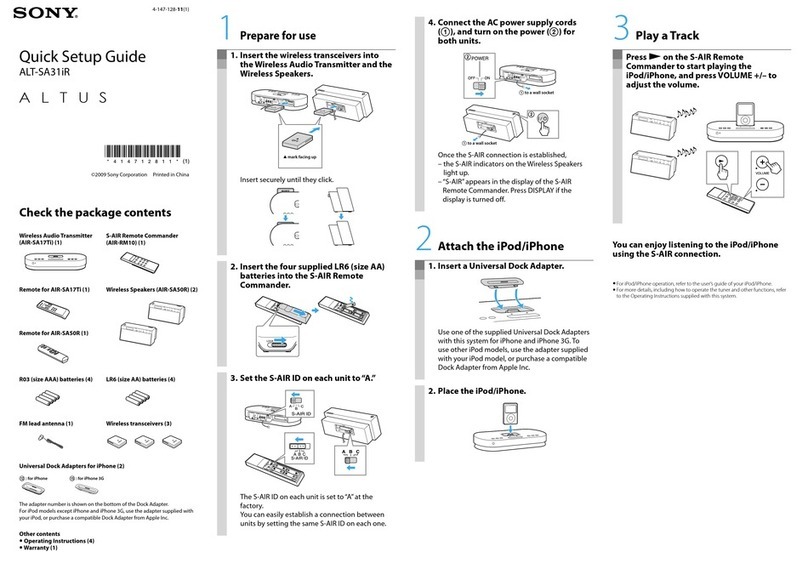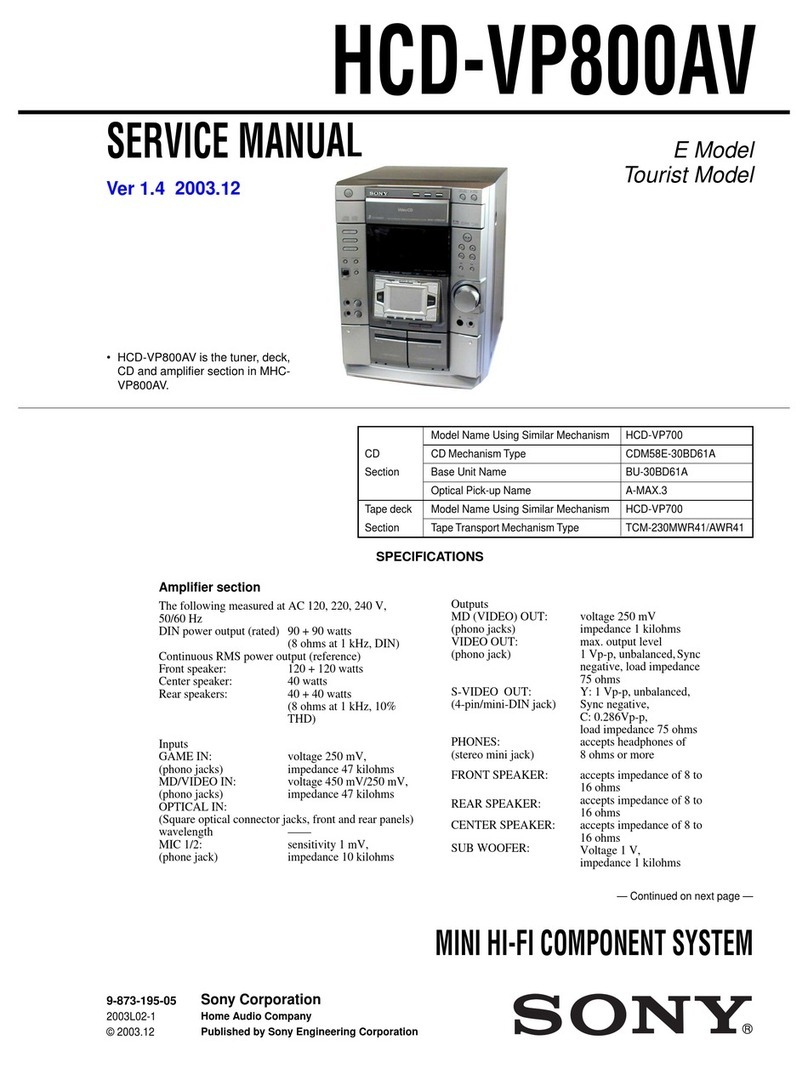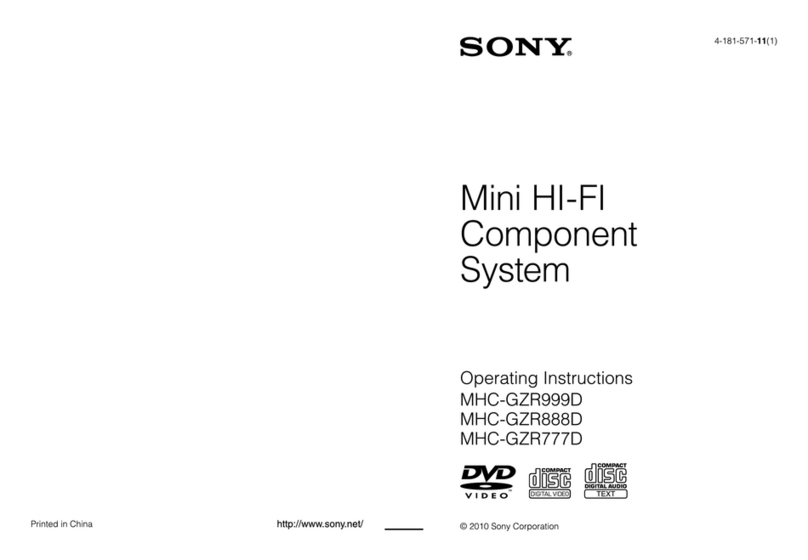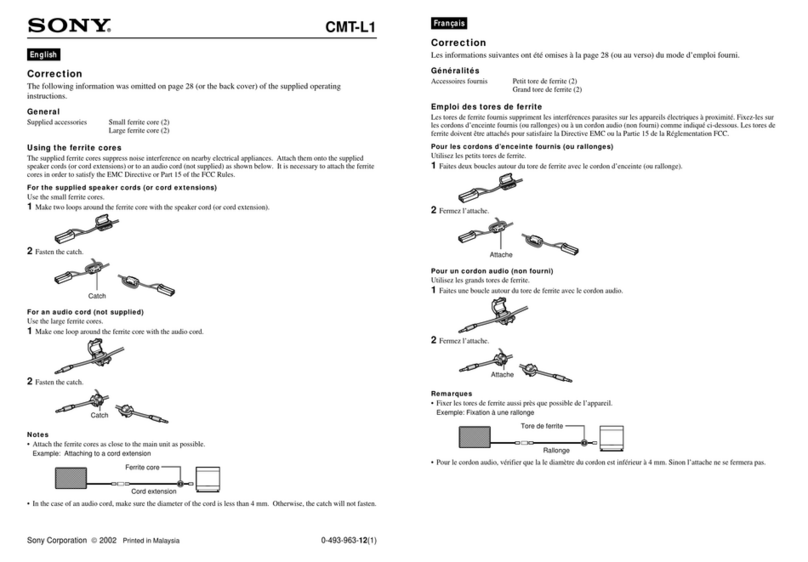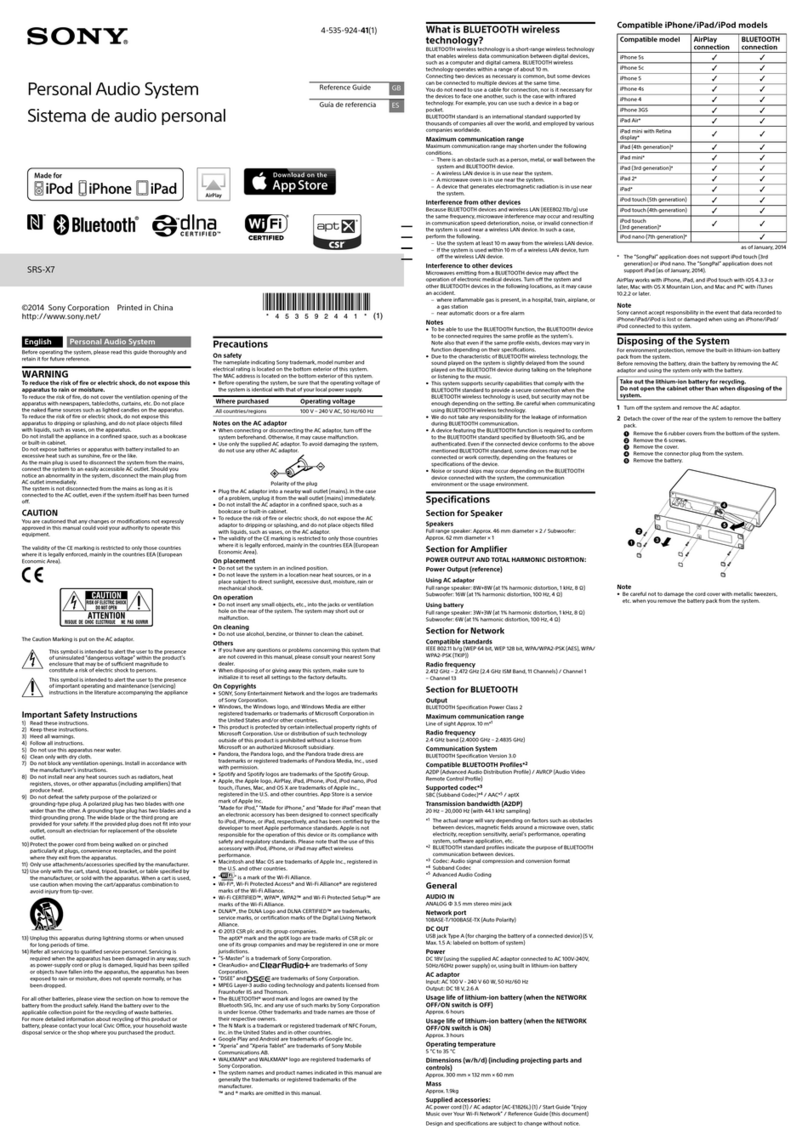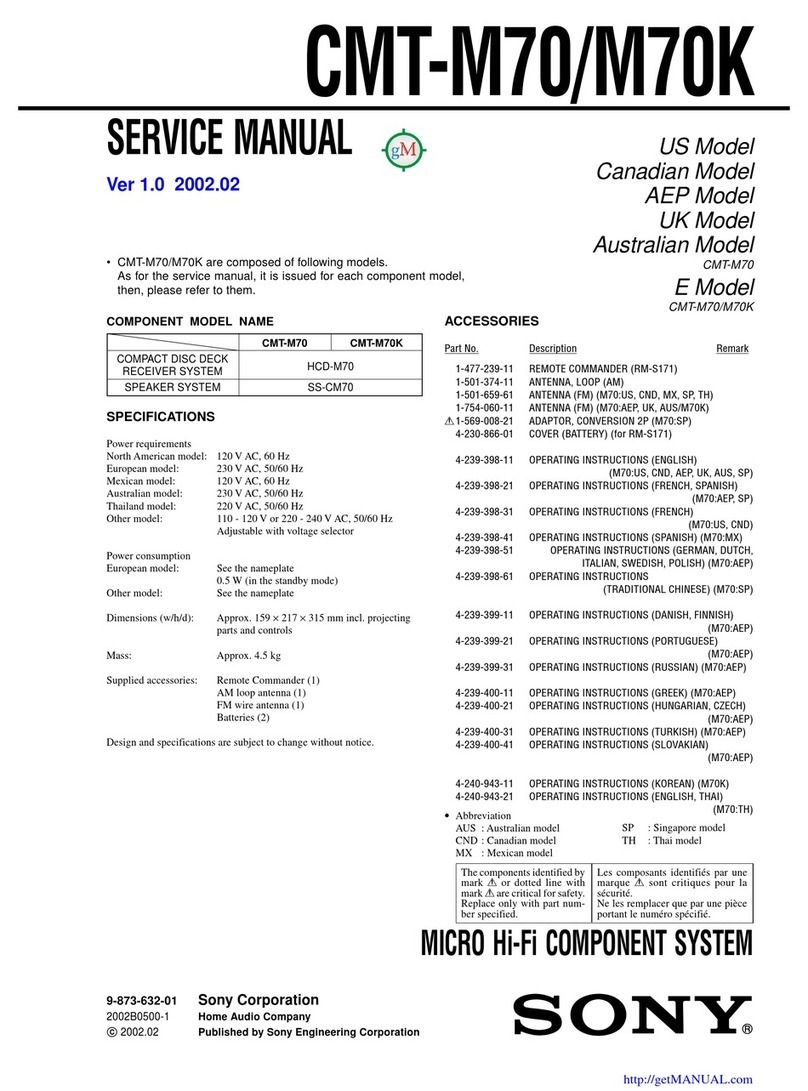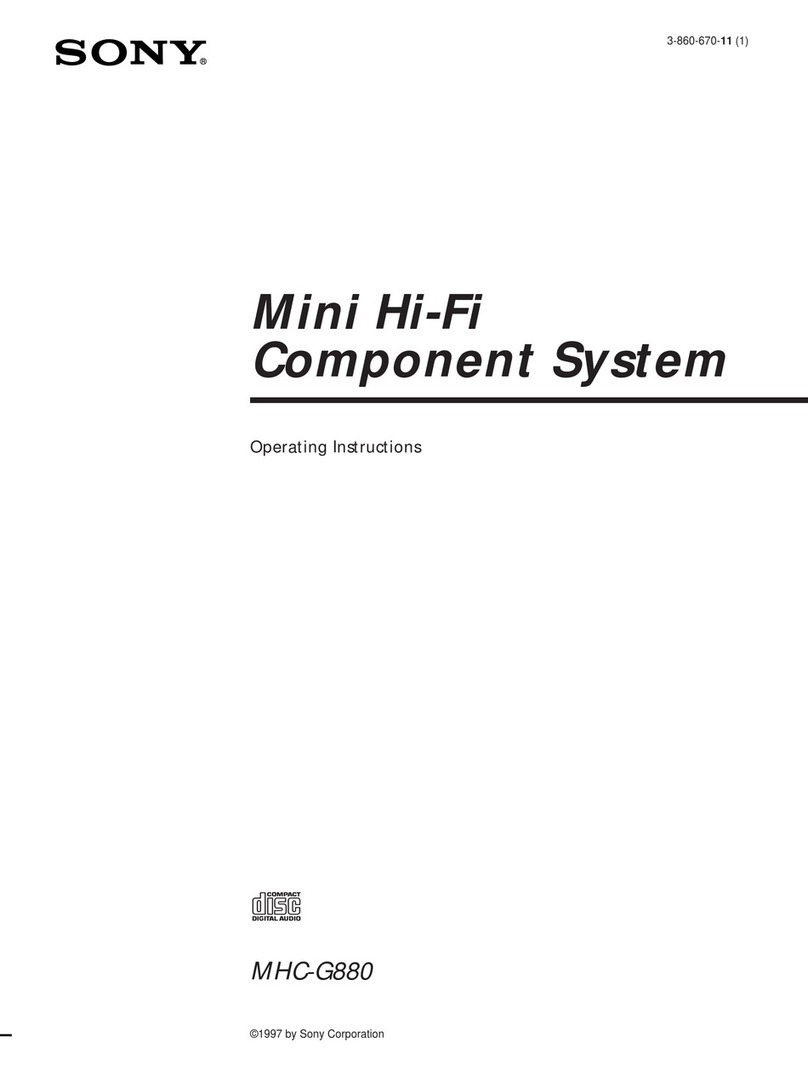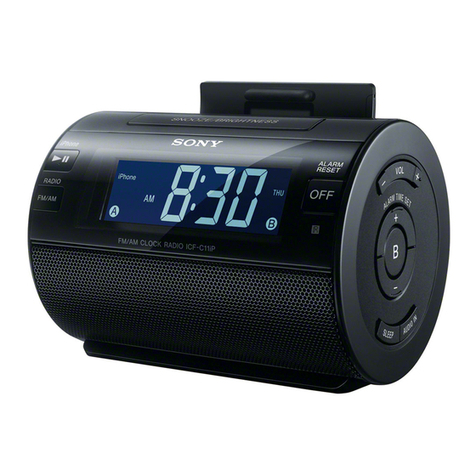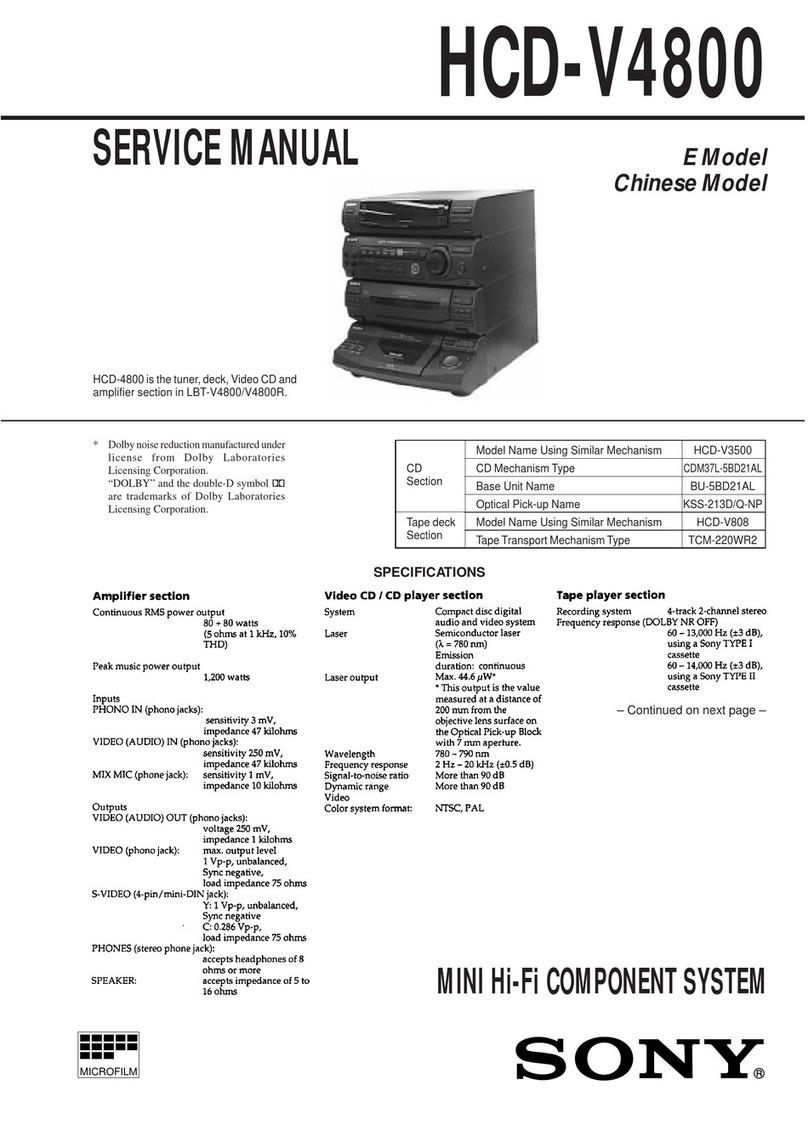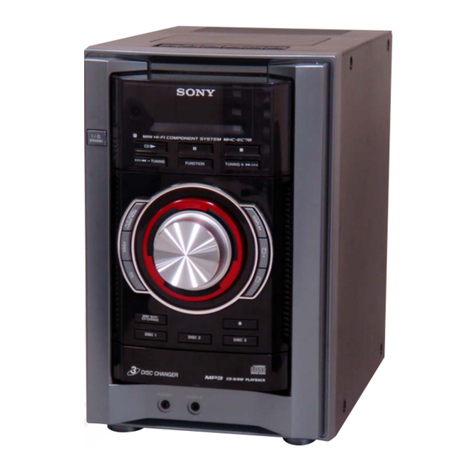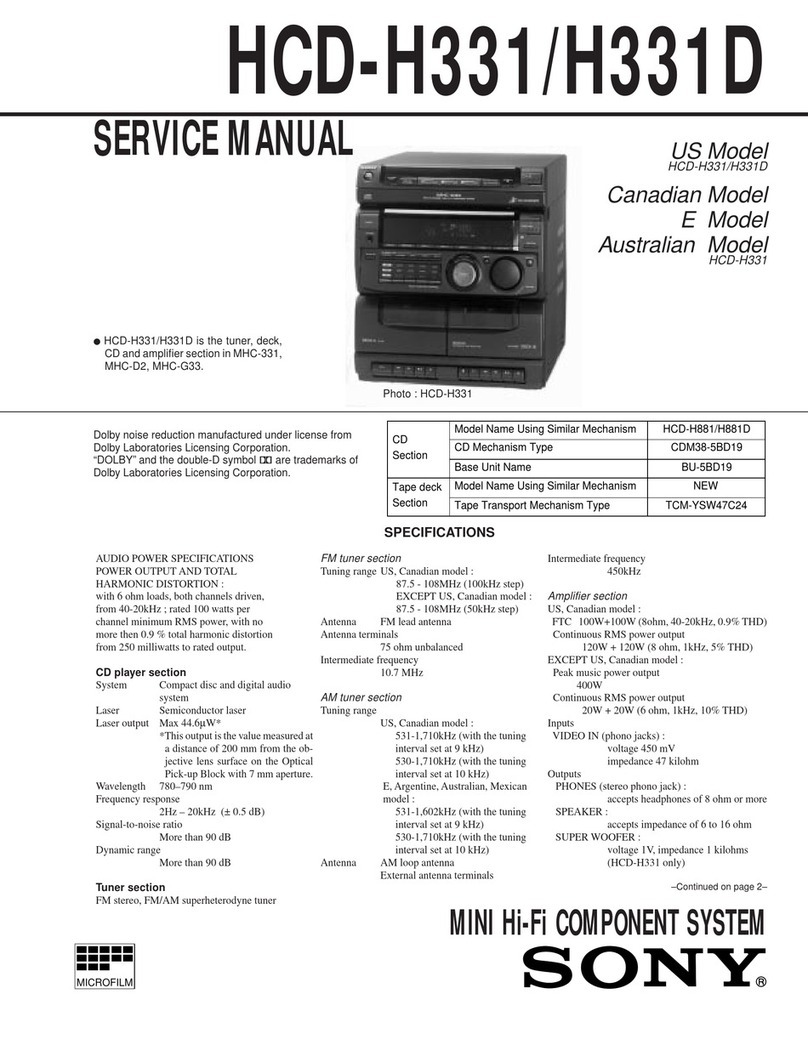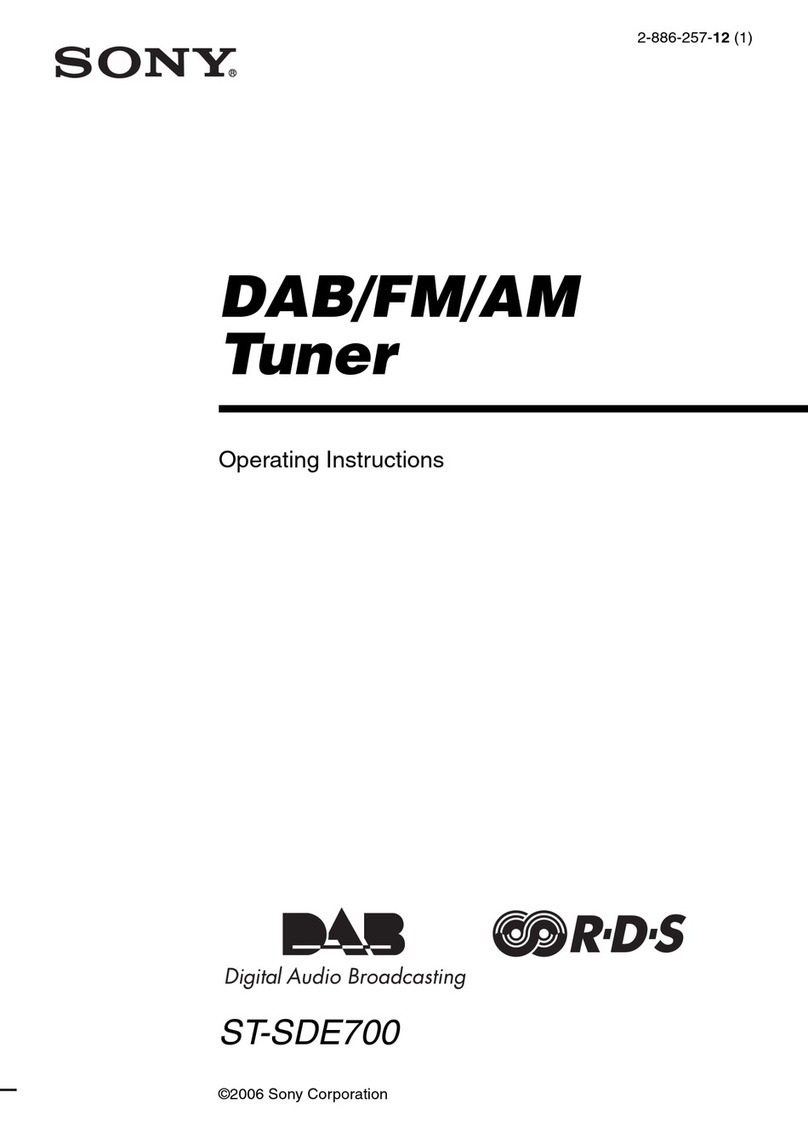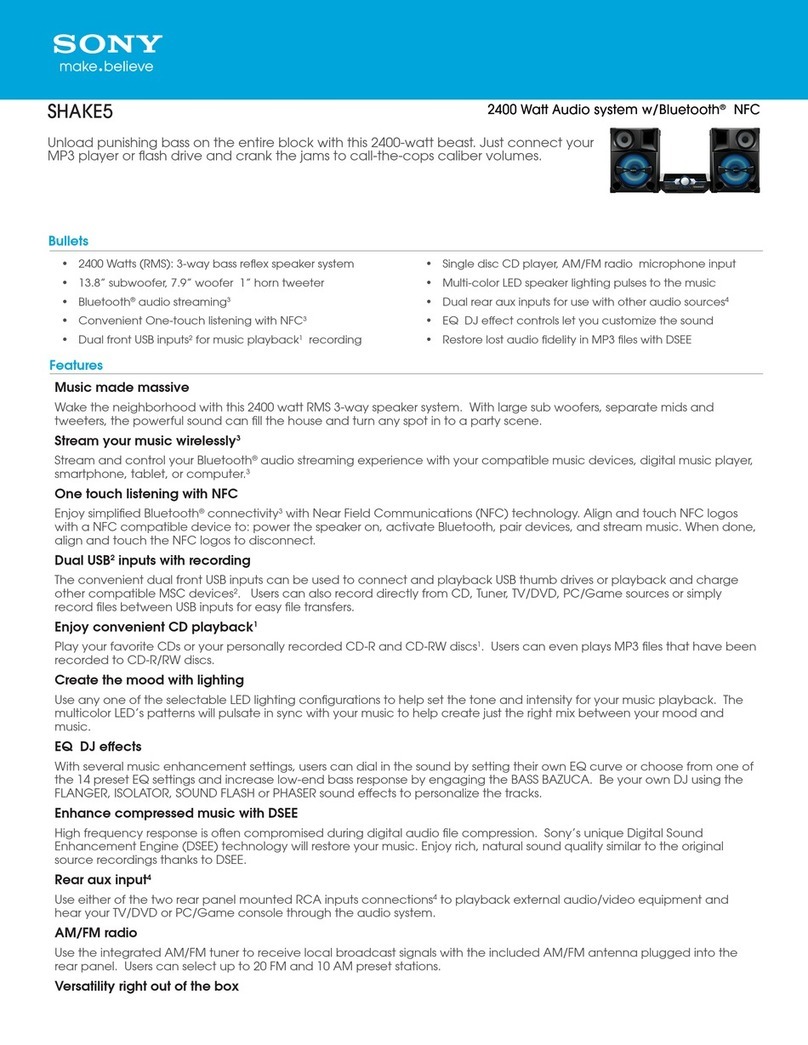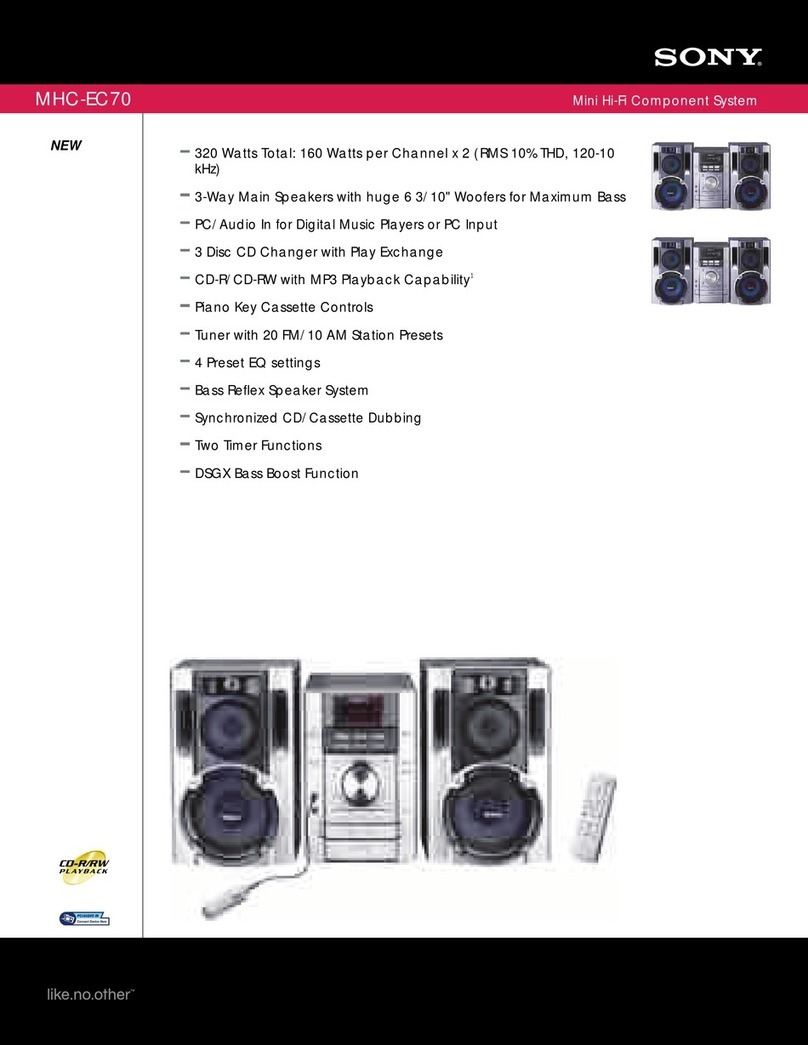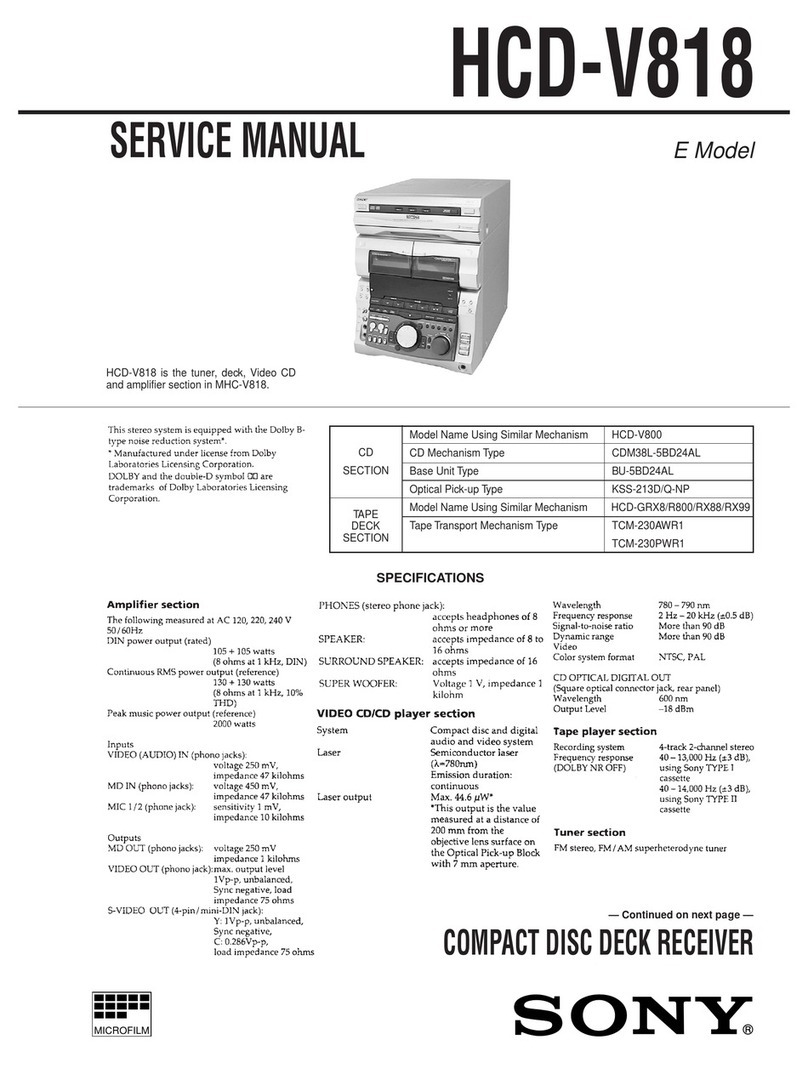SERVICE MANUAL
COMPACT DISC DECK RECEIVER
US Model
Canadian Model
AEP Model
UK Model
E Model
Australian Model
HCD-NE3
Ver 1.0 2004.03
9-877-693-01 Sony Corporation
2004C05-1 Home Audio Company
© 2004.03 Published by Sony Engineering Corporation
SPECIFICATIONS
•HCD-NE3 is the amplifier, CD player, tape deck
and tuner section in CMT-NE3.
Model Name Using Similar Mechanism NEW
CD Section Base Unit Name BU-K7BD80B
Optical Pick-up Name KSM-213EDP/C2NP
TAPE Section Model Name Using Similar Mechanism NEW
Tape Transport Mechanism Type CMAL5Z220A
CD player section
Laser Semiconductor laser
(λ=780 nm)
Emission duration:
continuous
Frequency response 20 Hz – 20 kHz
Wavelength 780 – 790 nm
Tape deck section
Recording system 4-track 2-channel, stereo
Frequency response 50 – 13,000 Hz (±3 dB),
using Sony TYPE I
cassettes
Tuner section
FM stereo, FM/AM superheterodyne tuner
FM tuner section
Tuning range 87.5 – 108.0 MHz
Antenna FM lead antenna
Antenna terminals 75 ohms unbalanced
Intermediate frequency 10.7 MHz
AM tuner section
US, Canadian, Mexican and Argentina models:
US, Canadian and Mexican models:
530 – 1,710 kHz
(with the tuning interval
set at 10 kHz)
531 – 1,710 kHz
(with the tuning interval
set at 9 kHz)
AEP and UK models: 531 – 1,602 kHz
(with the tuning interval
set at 9 kHz)
Other models: 530 – 1,710 kHz
(with the tuning interval
set at 10 kHz)
531 – 1,602 kHz
(with the tuning interval
set at 9 kHz)
Antenna AM loop antenna, external
antenna terminal
Intermediate frequency 450 kHz
AUDIO POWER SPECIFICATIONS
POWER OUTPUT AND TOTAL HARMONIC
DISTORTION:
(US model)
With 6 ohm loads, both channels driven, from
120-10,000 Hz; rated 13 watts per channel
minimum RMS power, with no more than 10%
total harmonic distortion from 250 milliwatts to
rated output.
Main unit
Amplifier section
North American model:
Continuous RMS power output (reference):
15 + 15 W
(6 ohms at 1 kHz, 10%
THD)
European model:
DIN power output (rated): 11 + 11 W (6 ohms at 1
kHz, DIN)
Continuous RMS power output (reference):
15 + 15W (6 ohms at 1
kHz, 10% THD)
Music power output (reference):
25 + 25 W
Other models:
The following measured at AC 230 V or AC 120 V, 50/
60 Hz
DIN power output (rated): 11 + 11 W
(6 ohms at 1 kHz, DIN)
Continuous RMS power output (reference):
15 + 15 W
(6 ohms at 1 kHz, 10%
THD)
Inputs
MD (phono jacks): Sensitivity 450 mV,
impedance 47 kilohms
Outputs
PHONES: Accepts headphones with
an impedance of 8 ohms or
more
SPEAKER: Accepts impedance of 6 to
16 ohms.
General
Power requirements
120 V AC, 60 Hz
AEP and UK models: 230 V AC, 50/60 Hz
Australian model: 230 – 240 V AC, 50/60 Hz
Argentina and Korean models:
220 V AC, 60 Hz
Taiwanese model: 120 V AC, 50/60 Hz
Saudi Arabian model: 120 – 127/220 V AC, 50/
60 Hz
Other models: 110–120 V or 220–240V
AC, 50/60 Hz
Adjustable with voltage
selector
Power consumption 45 W
Dimensions (w/h/d) Approx. 164 ×230.5 ×263
mm incl. projecting parts
and controls
Mass Approx. 3.7 kg
Supplied accessories Remote Commander (1)
R6 (size AA) batteries (2)
AM loop antenna (1)
FM lead antenna (1)
Design and specifications are subject to change
without notice.

